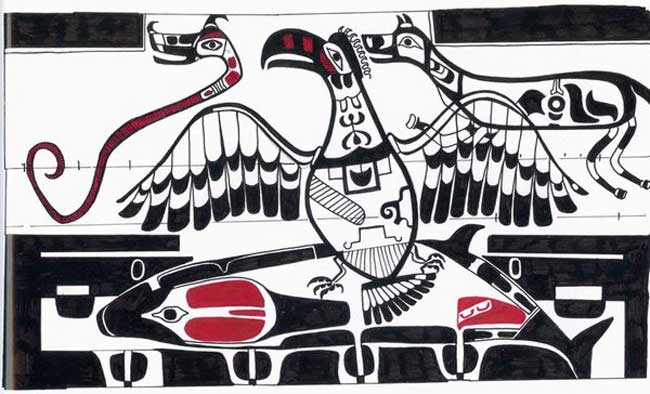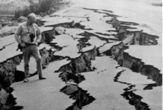Native Lore Adds Clues to Ancient U.S. Catastrophes

The Pacific Northwest is an historically active area for earthquakes and tsunamis. But some geological records can be difficult to sift through.
Now further clues of the region's catastrophic events have emerged from native lore.
The Cascadia subduction zone -- a fault line stretching along the coast from Vancouver to northern California -- likely erupted in seven or more major earthquakes in the last 3,500 years, geologists have learned in recent years.
Some of these events apparently were recorded in the Native American lore from the region. Through the use of mythological figures that represent wind, thunder, and water, a number of native stories describe major earth trembling and flooding along the coastline.
"There's a frightening amount of it," says Ruth Ludwin from the University of Washington. "It appears that these stories have to do with earthquake-, tsunami- and landslide-like events."
One recurring theme in this oral tradition is the epic battle between Thunderbird and Whale. Ludwin and her colleagues find a metaphor for ground shaking and ocean surges in stories of Thunderbird being dragged down to the ocean floor, with its talons dug into Whale's back.
Other stories depict a shape-shifting spirit -- called a'yahos by the Salish people -- that often appears as a giant serpent with two heads or blazing eyes and horns. A'yahos is associated with shaking and rushes of muddy water.
Get the world’s most fascinating discoveries delivered straight to your inbox.
"As you go around the region, there are very many of these stories and they are central to the native cultures, which suggests that these past earthquakes had profound effects on the local inhabitants," Ludwin said.
In two papers for the journal Seismological Research Letters, Ludwin and her collaborators have collected such stories in order to relate them to specific occurrences in the geologic past.
For instance, between 1860 and 1964, there were nine separate tales that appear to all describe a large tsunami from January 1700. Three of these stories -- passed down to grandchildren or great-grandchildren -- were eyewitness accounts of the flooding.
"There were a lot of native people living here," Ludwin said. "Hearing the local story based on eyewitness accounts helps us to realize that the event occurred right here and that people saw it and remembered it for many generations."
Across the Pacific, this same tsunami resulted in flooding in Japan. Recent evidence points to a magnitude 9 earthquake on the Cascadia subduction zone as the cause of these giant waves.
Other native tales may be related to a major earthquake on the Seattle fault that erupted around 900 A.D. and presumably unleashed a tsunami in Puget Sound. The researchers found five stories about a'yahos that are associated with spots along this fault line, and another 13 stories that originate from Puget Sound and the surrounding region.
One story mentions a spirit boulder, which the researchers matched to an actual boulder located just south of the Fauntleroy ferry terminal in West Seattle. Subsequent analysis determined that this boulder was dislodged by a prehistoric landslide that may have been a mile in length.
Interpreting all the stories has not been easy, since any given earthquake has different effects in different places. But Ludwin said that knowing some of the symbolism has helped bridge the human history with the geologic history.
"Over time, so much has been lost but the stories still have a tremendous richness of detail. Things happened that left a very deep cultural impression," Ludwin said.
- Tsunamis in History
- Deadliest Earthquakes in History
- Tsunami-Generating Earthquake Near U.S. Possibly Imminent
- Crumbled Tombstones Lead to New View of 1906 Earthquake
- Mystery of Deadly 1946 Tsunami Deepens
- Tsunami Special Report
Earthquake Frequency
Average number each year globally:
Image Gallery
Did You Know ?





